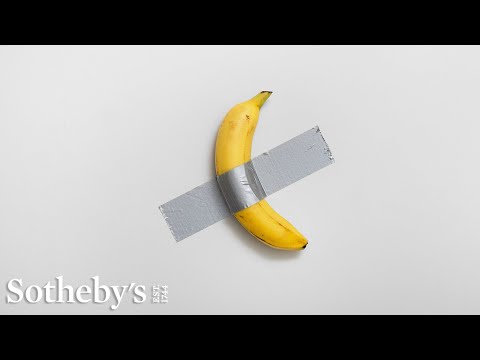
Banana Duct-Taped to Wall Auctioned for $6.2 Million

**The Bananas We Buy and the Bananas We Sell: Maurizio Cattelan’s “Comedian” and the Art Market Circus**
In a world where back-to-back climate disasters are wreaking havoc, humanitarian crises abound, and cities like New York suffer from unprecedented environmental challenges, a banana has managed to steal headlines once again. On November 20th, 2024, Maurizio Cattelan’s notorious artwork, *Comedian* — a single banana duct-taped to a wall — sold for an eye-popping $6.2 million at Sotheby’s auction in New York City. The sale reignited heated debates about the values (or lack thereof) driving the art market today.
But what is *Comedian*, really? Is it a biting critique of our commodified existence, an emblem of art-world excess, or simply, as some argue, a rotten piece of fruit cloaked in pretentiousness?
### A Gimmick Gone Global
When *Comedian* first debuted at Art Basel Miami Beach in 2019, it set the art world ablaze—not for its artistic complexity, but for its audacious simplicity. Just a single banana, affixed to a white gallery wall with a strip of duct tape, was priced between $120,000 and $150,000 per edition. The absurdity captured viral attention, with both collectors and internet commentators questioning whether the art world had reached an irreversible point of self-parody.
Cattelan, the artist famed for his irreverent and often controversial works (including a golden toilet titled *America*), claimed that *Comedian* was a reflection of the art world itself, a dialogue between materiality and symbolism. Critics, however, saw it as a cheap stunt — a gesture as hollow as the banana itself.
Yet, defying criticisms, the artwork transcended its status as meme fodder. Three editions of *Comedian* sold out almost immediately, one of which was later donated to the Guggenheim Museum in New York. On November 20th, the second edition went under the hammer at Sotheby’s, equipped not only with its original duct tape but also with the potential to be paid for via cryptocurrency. Six minutes of frenzied bidding resulted in a $6.2 million price tag, cementing the banana as a high-scale commodity that is paradoxically both temporary and eternal.
### Brewing Controversy: Bananas, Capitalism, and Art
On a superficial level, *Comedian* is miraculously simple. Its premise is modest: a banana you can purchase at your local grocery store taped to a wall using a roll of duct tape sold at any hardware store. But beneath this mundane exterior lies a storm of cultural commentary, much of it unintended.
To many, the banana is emblematic of Western exploitation. Historically, the fruit calls to mind the troubling legacy of colonialism and the banana republics of Central America, where corporations like the United Fruit Company exploited land and labor to supply this symbol of modern convenience to the world. Today, the banana also symbolizes ongoing exploitation, with unsustainable agricultural practices jeopardizing the environment and the livelihoods of workers in the Global South.
It’s ironic, then, that an innocuous fruit — often priced at less than a dollar in supermarkets — can operate within the art market as a symbol of decadence, capitalistic excess, and even willful ignorance. For $6.2 million, the buyer didn’t actually receive the banana itself, which will inevitably rot and need replacing. What they purchased instead was a certificate of authenticity and the right to replicate the installation — along with the laborious responsibility of defending their purchase as a masterpiece, rather than a gimmick.
### What Does $6 Million Buy: Art or Absurdity?
The sale has raised larger questions about the gatekeeping and absurdity of contemporary art markets. Critics have called the Sotheby’s event an “art-world satire,” describing the banana as symbolic not of high art but of inflated consumerism. In its simplicity, *Comedian* speaks to the hierarchy of value in the art world — where individuals partake not in acquiring an object of beauty or creativity, but in the conspicuous act of commodification itself.
As Sotheby’s auctioneer Oliver Barker nervously introduced the piece (“Not quite sure what to expect here”), a volley of bids commenced between international bidders, including an online participant and representatives on the phone. The winning bid came from Jen Hua, head of Sotheby’s China division, marking the banana’s entrance into yet another layer of globalized commerce.
In essence, the bids weren’t just for the banana but for the idea of ownership over an infamous cultural phenomenon. The banana was elevated to a status where the fruit itself became irrelevant. As one Sotheby’s representative explained, the banana and duct tape can be replaced as needed. The real commodity here is the intellectual or symbolic framework backing the piece — an idea